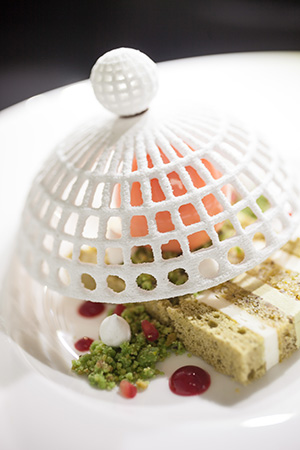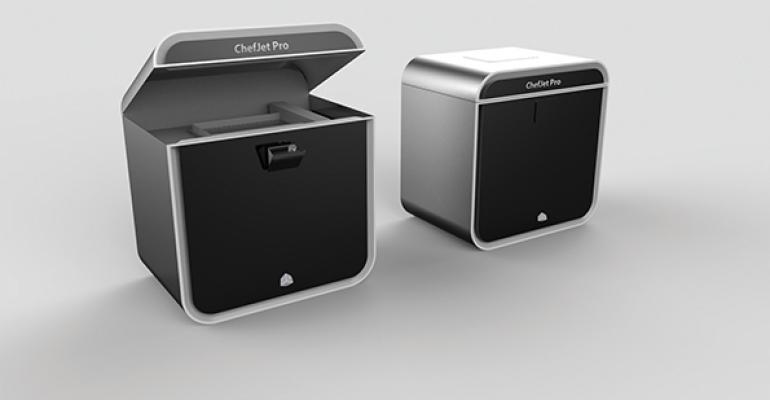3D printers were first developed in the early 1980s, and commercialized in the early 1990s. Since then, the technology has been used to make everything from aircraft turbine engines to human organs.
Now the powerful tool is being introduced as part of a chef’s arsenal.
3D Systems, based in Rock Hill, S.C., which invented and first commercialized the 3D printer, debuted the ChefJet Pro at the NRA Show this weekend. It is the first professional-grade printer for the food world, said Carrie Kommers, a consultant for 3D Systems.
The printer is not yet for sale, but it will be ready for market next year, Kommers said.

ChefJet is a large, box-like printer that can turn sugars and other ingredients into colorful, edible works of art. The printer was among the most gasp-inducing products on display at the show. It can print confections in a variety of flavors and colors, and can even print words down to an 8-point font.
The printer can print two vertical inches per hour, and can print 100 two-inch candies per hour, Kommers said.
And while the device is being used to make sugars and candies that can be printed into intricate designs that top cakes or act as fancy sugar cubes, the potential applications are considerable.
“This is a new era of culinary,” Kommers said. “This enables culinarians to make things they couldn’t do with their hands. It’s another quiver in their belt.”
What remains to be seen is the potential applications for the device. The company insists that the printer doesn’t intend to replace chefs.
“This is not to be a replacement for culinarians and talent,” said Liz von Hasseln, creative director, food, for 3D Systems. “It’s another tool.”
Indeed, 3D Systems plans to open a culinary lab this summer in Los Angeles, the 3DS Culinary Center. There, industry professionals, chefs and mixologists will be able to experience the printer and potentially find new uses for the device.
“It’s a place where culinarians can come and experiment,” von Hasseln said, noting that there will be classes and symposiums. 3DS is working with the Culinary Institute of America to develop educational programs, seminars and conferences, and the CIA is integrating 3D printing into its curriculum.
3D printing is also known as additive manufacturing. Printers take designs created using software, or scanned using 3D scanners, and use successive layers of material to create the object. A 3D printer is like an ink-jet printer that keeps layering material over the same space, creating a three-dimensional object rather than a two-dimensional print.
A growing number of companies are experimenting with different uses of 3D printers, and many are trying to print food. But so far, there hasn’t been a professional application until the ChefJet, von Hasseln said.
“There’s been a lot of experimentation regarding 3D printed food,” she said. “But there has not been an application professionally.”
The draw, potentially, for restaurants is the artwork. At the NRA Show, 3D Systems demonstrated its product by printing tart, multi-colored candy with a pair of interlocked squares. Its display booth included numerous designs that cannot be replicated, at least not easily, by hand, including a white, latticework skull.
There is considerable potential in the catering world, where it’s easy to imagine fancy cakes or candies at each place setting with the name of the guest.
But there are many other potential uses in pastry and other foods. One chef developed a French onion soup using oxtail broth poured over a printed object infused with onion powder.
Other items remain to be seen. 3DS will have a digital library of objects that chefs will be able to print. But they can also develop their own designs.
“They can design anything they can imagine,” von Hasseln said.
This story has been revised to reflect the following correction:
Correction: May, 22, 2015 An earlier version of this story misspelled the name of the Culinary Institute of America.
Contact Jonathan Maze at [email protected].
Follow him on Twitter: @jonathanmaze





